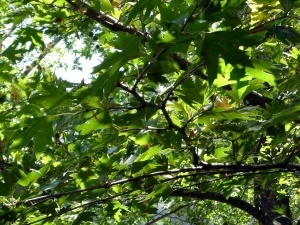
Young farm forester of the year Dean Martin shades his eyes and points up the gully to where a mob of sheep are sheltering from the Hawke's Bay sun under a grove of kanuka trees reports The Dom Post. "Those trees have got to come out," he says, uttering words that would make ardent conservationists weep. "The sheep stay under the kanuka for too long, creating a bare patch and piling up the manure, which then gets washed down into streams and ponds." His solution is to replace the kanuka with red alder, oak and plane trees. They will still provide shade, but with pruning it will be dappled to let sun in to keep grass growing and the sheep shifting throughout the day. In winter, they will lose their leaves and allow sunlight onto the pasture beneath. "Natives aren't the only answer," he says. "This way, I get back pasture that has been taken out of production and keep nutrients on the farm rather than losing them in the waterways." Mr Martin, 36, who works with parents Gerald and Sue on Glenlands, their 242-hectare hill country farm in the Esk Valley just out of Napier, doesn't go along with the prevailing view that native trees are always best. He has planted hundreds of trees every year since 1997. Most are natives, but included among them are oaks, planes, hazels, walnuts, eucalypts, cypresses, pines, a variety of fruit trees and the osage orange, the tree American Indians made their bows from. He started by trying to reduce the possum population. He used up to 300 kilograms of brodifacoum poison in a 1ha native block, but made little inroad till the regional council introduced a community-wide scheme. This was later taken over by the Animal Health Board when some neighbouring cattle reacted to tuberculosis testing. He supplemented that with cyanide paste and now hardly ever sees a possum. "All of a sudden, we've had lots of new growth in the bush, especially the whiteywood and five-finger, and bird numbers are growing again. I remember as a kid seeing flocks of 40-50 waxeyes in the poroporo before they dropped to ones and twos, but now it's back to 20 at a time."
We welcome your comments below. If you are not already registered, please register to comment
Remember we welcome robust, respectful and insightful debate. We don't welcome abusive or defamatory comments and will de-register those repeatedly making such comments. Our current comment policy is here.